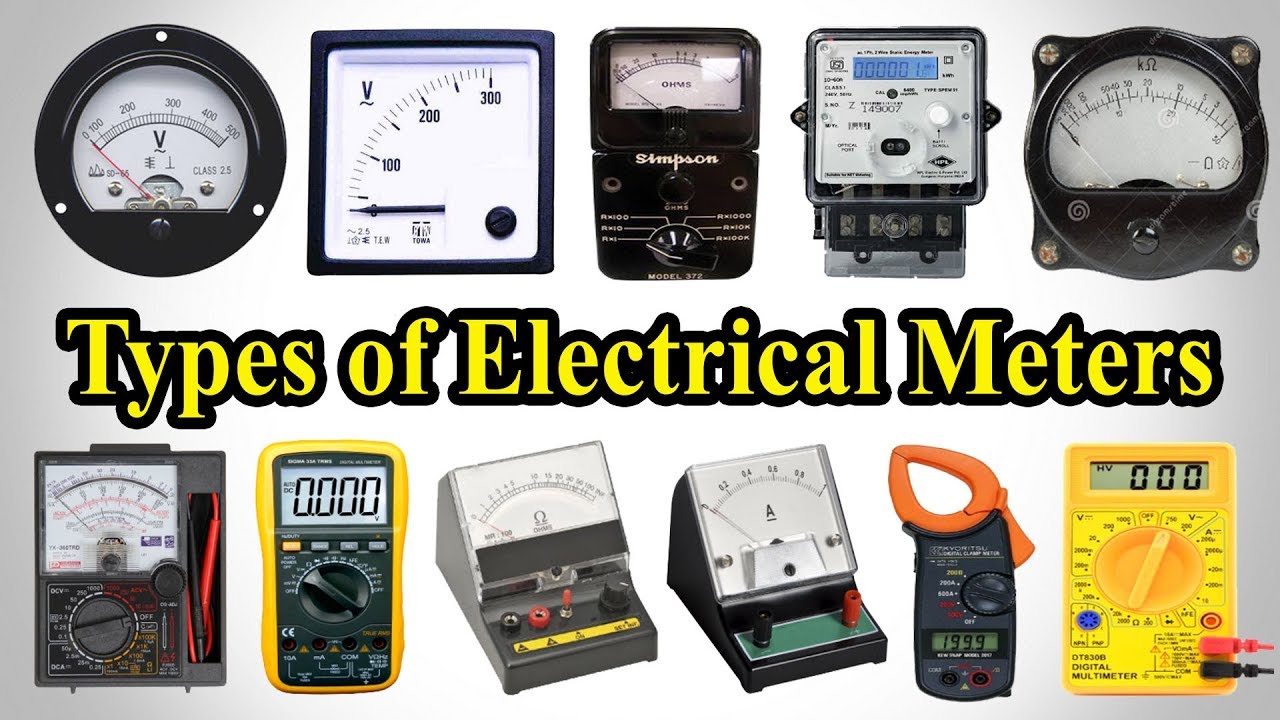Are you new to the world of electrical measuring tools and feeling overwhelmed by all the options out there? In this beginner’s guide, we’ll walk you through everything you need to know about electrical measuring tools. From millimeters to clamp meters and oscilloscopes, we’ll explain what each tool does and how it can be used in your work or DIY projects. By the end of this guide, you’ll have a solid understanding of which electrical measuring tools are right for your needs and how to use them effectively.
Introduction to Electrical Measuring Tools
If you’re new to electrical work, it’s important to familiarize yourself with the various measuring tools available. These tools are essential for ensuring safety and accuracy when working with electricity. In this guide, we’ll cover the different types of electrical measuring tools, as well as their key features and functions. By the end, you’ll know everything you need to know about choosing the right tool for the job.
The first type of electrical measuring tool is the voltmeter. This tool is used to measure voltage or the force at which electricity flows through a conductor. A voltmeter is placed in series with the circuit being tested, and its readings are taken by observing the deflection of its needle on a scale.
We have ohmmeters. To use an ohmmeter, simply place its probes across the two points in a circuit that you wish to measure resistance between. The reading on the ohmmeter’s display will give you the resistance in ohms between those two points. Understanding the Basics of Electrical Measuring Tools.

Benefits of Electrical Measuring Tools
There are many benefits to using these tools. For one, they can help you save time and money by allowing you to quickly and accurately measure electrical parameters. They can also help you avoid potential hazards by providing safe and reliable measurements. Additionally, electrical measuring tools can help you improve your work quality by providing accurate and repeatable measurements.
Some of the most common benefits of these include:
Accuracy: Electrical measuring tools can provide much more accurate readings than traditional analog devices. This is especially important when working with high-voltage circuits where even a small error could result in serious injury or damage to equipment.
Safety: By knowing the exact voltage or current flowing through a circuit, you can avoid potential hazards such as electrocution or fires.
Efficiency: Electrical measuring tools can help you work more efficiently by eliminating the need for multiple devices to measure different aspects of a circuit. For example, a multimeter can measure both voltage and current, while a clamp meter can measure current without having to disconnect any wires.
How to Use Electrical Measuring Tools
When working with electricity, it is important to have the correct tools to ensure safety and accuracy. This allows you to measure the current, voltage, and resistance in an electrical circuit. These measurements are essential when troubleshooting electrical problems or designing circuits.
There are a variety of electrical measuring tools available, each with its own unique function. The most common type of electrical measuring tool is the multimeter. A multimeter can be used to measure voltage, current, and resistance in an electrical circuit. Multimeters are available in both analog and digital varieties.
Another type of electrical measuring tool is the clamp meter. Clamp meters are used to measure currents flowing through a conductor, such as a wire or a cable. Clamp meters are available in both AC and DC varieties.
Voltage testers are another type of electrical measuring tool. Vol testers are used to test for the presence of voltage in a circuit. Voltage testers are available in both AC and DC varieties.
Ammeters are used to measure the amount of current flowing through a conductor. Ammeters are available in both AC and DC varieties.
When using any type of electrical measuring tool, always follow the manufacturer’s instructions carefully to ensure safety and accuracy
Common Mistakes in Using Electrical Measuring Tools
There are a few common mistakes that people make when using this. First, they may use the wrong tool for the job. Second, they may not take proper safety precautions. Third, they may not know how to interpret the results of their measurements. Let’s take a closer look at each of these mistakes:
- Not calibrating the tools properly: This is probably the most common mistake people make when using electrical measuring tools. This can lead to serious problems if you’re relying on those readings to make decisions about your electrical system.
- Using the wrong tool for the job: Another common mistake is using the wrong tool for the job. If you use the wrong tool for the job, you may not get accurate results.
- Not taking proper safety precautions: Another mistake people make is not taking proper safety precautions when using electrical measuring tools. These tools can be dangerous if used improperly. Always follow the manufacturer’s instructions and take all necessary safety precautions when using them.
- Not knowing how to interpret the results of their measurements: Another mistake people make is not knowing how to interpret the results of
Safety Precautions When Using Electrical Measuring Tools
When using any kind of electrical measuring tool, it is important to take safety precautions to avoid injury. Here are some tips:
– Always read the instructions before using the tool.
– Wear proper safety gear, including gloves and eye protection.
– Be aware of your surroundings and make sure there is no danger of electrocution.
– Do not use the tool near water or other conductive materials.
– Keep the tool dry and clean to avoid potential hazards.
Troubleshooting Tips for Electrical Measuring Tools
If you’re having trouble with your electrical measuring tools, here are a few troubleshooting tips to help you get back on track:
- Make sure that the batteries in your tool are fresh and properly installed. Dead or dying batteries are one of the most common causes of issues with these tools.
- Check that all connections are tight and secure. Loose or faulty connections can cause inaccurate readings or even damage to your tool.
- Make sure that you’re using the correct setting for the task at hand. Many tools have multiple settings for different purposes, so it’s important to use the right one for the job at hand.
- If you’re still having trouble, consult the user manual for your specific tool. It can be helpful to review the basics of how your tool works and what each of its features does.
Conclusions
As you can see, there are a variety of electrical measuring tools available, each with its own specific purpose. By understanding the basics of each tool and what they’re used for, you’ll be able to choose the right one for the job at hand. When it comes to electrical safety, always err on the side of caution. If you’re ever unsure about which tool to use or how to properly use it, consult a professional electrician. If you need any other information please visit this site buscells.com











